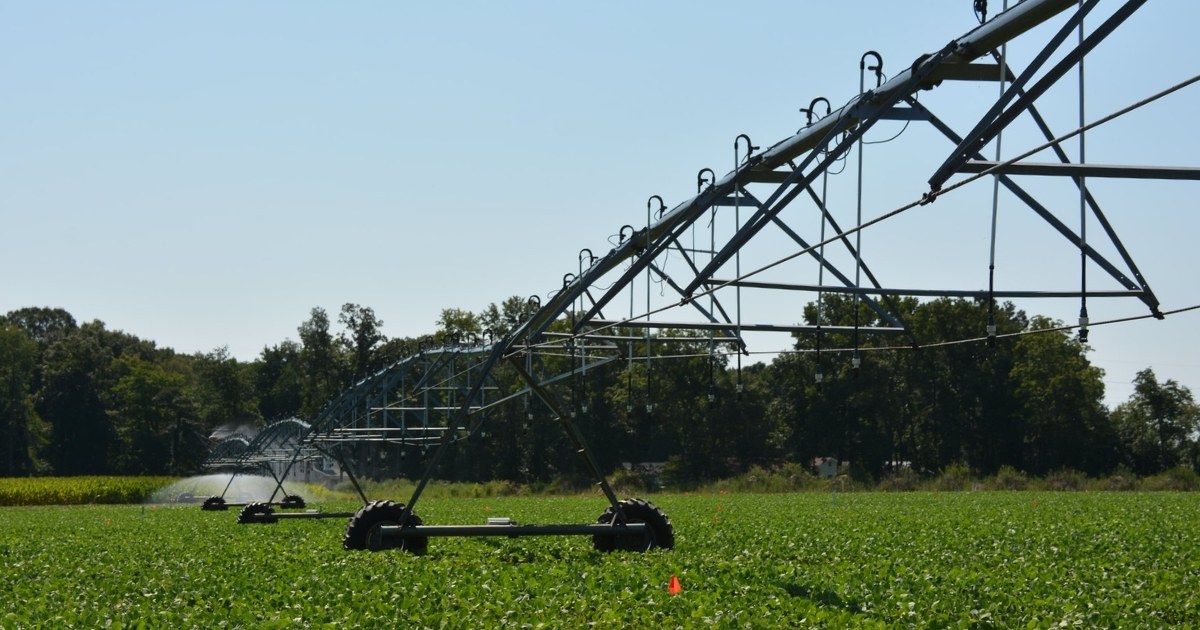
Category: Cooperative Extension

Getting the most out of your irrigation scheduling investment
June 16, 2021 Written by James Adkins, Associate Scientist - Irrigation Engineer
If you were to ask me six years ago, “What is the best way to schedule irrigation?” I would have confidently answered “soil moisture sensing.” While I continue to hold the opinion that soil moisture is the most accurate method, modern computerized irrigation schedulers offer the most return on your financial and labor investment. Nearly a decade of irrigation research projects shows marginal, if any, improvements to yield with soil moisture over advanced evapotranspiration-based scheduling methods. The marginal return coupled with the sizable financial and labor costs associated with installing and maintaining soil moisture sensors renders them impractical for most agronomic crops.
Advanced scheduling is much more than a simple checkbook water balance, where daily usage from a crop water use curve is subtracted from the balance while irrigation and rainfall are added. While the checkbook method still gives a coarse measure of current water balance, the problem lies with the fact that crop water use curves typically predict the maximum daily water use for each crop stage. There is no mechanism to account for low use weather conditions like cloudy days or high humidity. For example, it is commonly accepted that the peak water use for field corn is 0.33” per day when in reality, we only had seven days in 2018 where the actual usage was more than 0.25” per day and zero days with more than 0.3” of water use. The previous year saw eight days in excess of 0.25” and two days with 0.3” per day of crop water use. Clearly, there are more accurate methods for scheduling that account for localized weather conditions, but they all require weather station data.
Modern computerized irrigation schedulers offer the most return on your financial and labor investment.
Fortunately for Delaware farmers, there is free access to the highest density MesoNet in the United States with the Delaware Environmental Observing System (DEOS). Within this site, five-minute weather data and historical values are readily available to any user. In the data tab of the DEOS site, there is a link to the “Ag Weather Summary,” where all the relevant ag data for 42 weather stations going back as far as 2004 can be found. Of particular interest for irrigation scheduling purposes is the RefET values.
RefET stands for Reference Evapotranspiration, or in layman’s terms, how much water a well-maintained grass football field would use each day. All advanced scheduling systems base their calculations on a RefET value multiplied by a crop coefficient. This coefficient accounts for crop type and growth stage to predict daily crop water use. While there are not any DEOS weather stations in Maryland, most of the important values, aside from rainfall, do not vary greatly across the relatively narrow Delmarva geography, and therefore, the nearest DEOS station will be sufficiently accurate.
There are many ET schedulers available as free tools supported by universities and as paid apps through custom service and pivot manufacturers, each having its own set of pros and cons. I have personally used half a dozen or more ET-based schedulers over the years ranging from clumsy Excel spreadsheets requiring daily manual entry of Temp, Humidity, Wind Speed and Solar Radiation numbers to sophisticated mobile apps that integrate pivot control and provide weather prediction. For more than a decade, the KanSched system developed by Kansas State University has been my go-to recommendation for irrigators looking to comply with the NRCS 449 Irrigation Water Management standard. More recently, the development of the Delaware Irrigation Management System (DIMS) has provided the same functionality with user-friendly features that automatically import soil and weather data and a predictive feature utilizing National Weather Service information to estimate future water use. The DIMS network is free to all users, although non-Delaware residents will need to manually enter some of their soil information. Paid services offer another level of convenience by incorporating easy-to-use mobile apps to assist with in-field decisions and direct control while still providing accurate irrigation scheduling data. Talk to your pivot dealer for more information on these services.
Soil moisture sensors are still very accurate and provide direct readings on field conditions while accounting for poorly calibrated timer setting charts and inadequate drainage. However, for cheap, reliable, low workload management of agronomic crop irrigation, stick with an ET scheduler.
